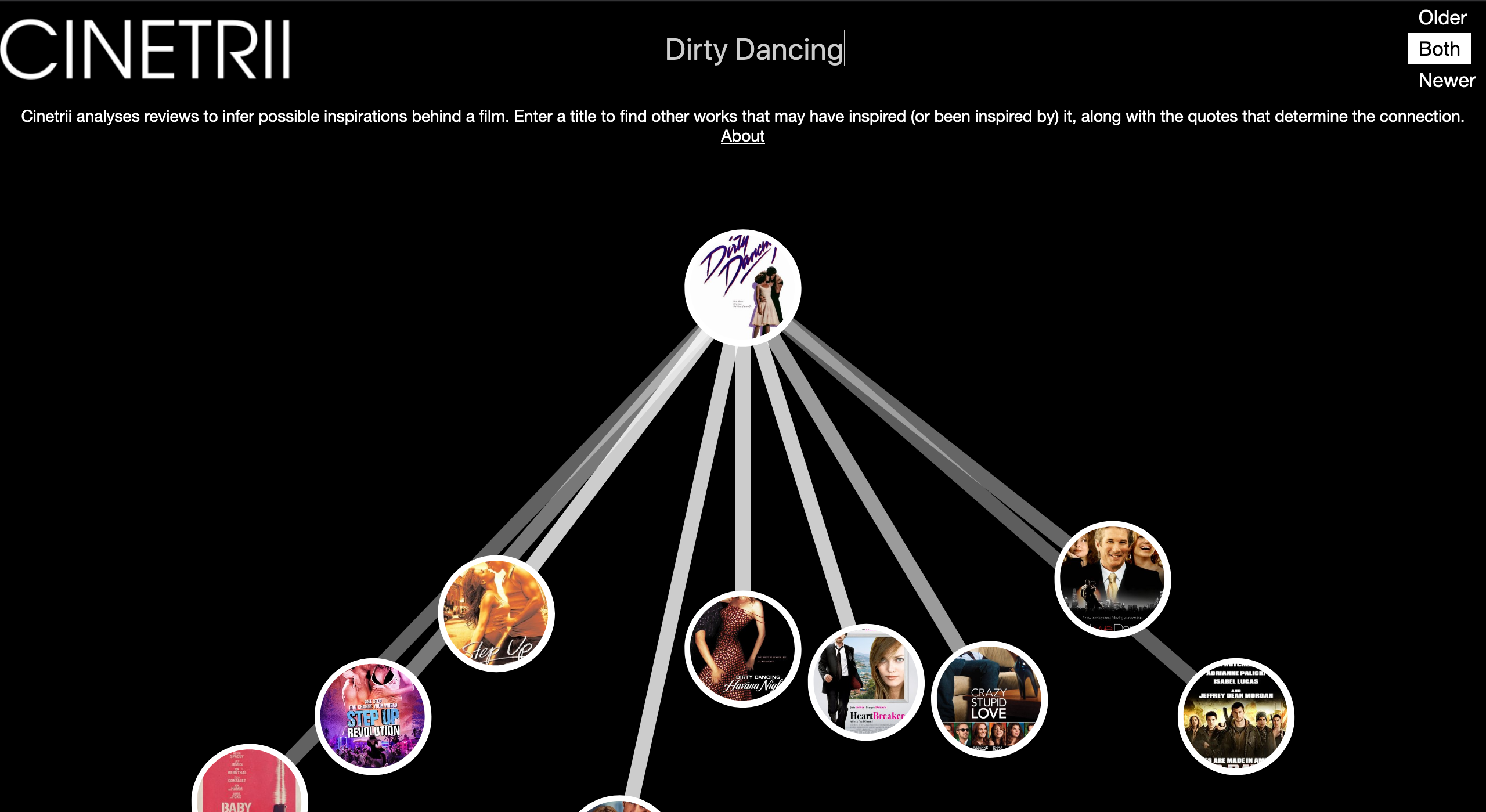Your next movie night is about to get a whole lot more interesting
Movie recommendation websites and generator apps rarely produce satisfying results. For the most part, the films recommended either share the exact same cast or are way too similar to be exciting. Well, most recommendation websites.
Cinetrii is designed to establish connections between films. These connections can be anything from recurring themes, motifs, explicit references, and homages. It’s simple interface is easy to use and each search yields a multitude of results.
“The results range from profound to quite spurious, but for certain films with rich discourse surrounding them it works pretty well,” says Nils Everling, creator and founder of Cinetrii. “For example, I am a fan of Michelangelo Antonioni who made a string of great films in the 60s and 70s. Through Cinetrii I found Burning by Chang-dong Lee since critics had compared it to L’Avventura.”
Everling got the idea for Cinetrii after watching a YouTube video wherein the narrator discussed the importance of understanding the lineage and history of art, in all its different forms.
“The subject of the video was a Rihanna song, but it got me interested in exploring the “lineage” of cinema in some way as I’m more of a film nerd,” says Everling. “I was studying computer science at the time, so I thought to apply natural language processing to movie reviews and see what insights could be gained from it.”
While most film recommendations are based on popularity, likes, and ratings, Cinetrii’s algorithm analyzes written critic reviews for a given film; it can recommend works that have been influenced by it and works that have influenced it.
In regards to traditional recommendations systems, Everling says, “While the results can be more consistent, they usually exhibit a strong bias toward the most popular movies, stuff everyone has already seen.”
Instead of recommending popular box-office films, Cinetrii looks for mentions of other films in reviews of a particular film and tries to evaluate whether the mention is interesting, explains Everling.
For example, a search for Taxi Driver will yield The Assassination of Richard Nixon, among others, both old and new. The recommendation links to a 2004 review stating that “The character [of Richard Nixon] is based on a real person and true events which also may have been the inspiration for the similarly named Travis Bickle in Taxi Driver.”
“Two films with intersecting casts are unlikely to make up an interesting connection, a connection will score higher if multiple critics establish it, and so on,” says Everling. “Under the hood there are a sequence of technical problems that have to be solved, like finding reviews, determining which parts of a web page constitute a review of a particular film and resolving references to other films.”
Since finishing his studies in computer science, Everling employs data science in other, less artistic, ways. Cinetrii remains his creative pass time.
“There is plenty to do within Cinetrii still, such as improving the coverage of international films and reviews in other languages,” says Everling, adding that he is in the process of updating the Cinetrii algorithm. “I maintain Cinetrii because I use it myself and it may be of interest to others.”
Everling encourages viewers to reach out via Facebook to let him know if their favourite movie is missing.
